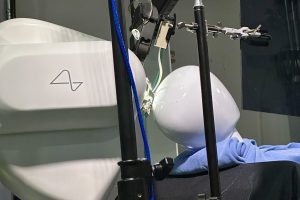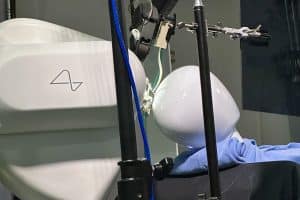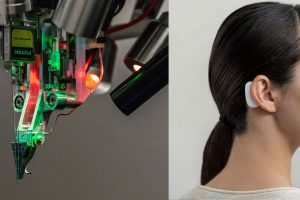- 👁️ Neuralink’s Blindsight implant recently received the FDA’s “breakthrough device” designation.
- 💡 The Blindsight device aims to enable sight for individuals who have lost both eyes and their optic nerve.
- 🚀 The FDA designation propels Blindsight closer to consumer availability but several hurdles remain.
- ⚖️ The breakthrough tag aligns the device with promoting health equity by addressing inequities in medical instruments.
- 🤝 FDA support could expedite Blindsight’s development and market release.
- 🧪 Neuralink is advancing human trials and has updated on its second patient for brain implant testing.
In a groundbreaking development in the field of neurotechnology, Neuralink’s Blindsight implant has recently garnered the FDA’s “breakthrough device” designation. This milestone not only marks a significant step forward for the technology but also holds promise for transforming the lives of individuals who have lost their sight. In this blog post, we will delve into the significance of this FDA designation, explore how the Blindsight device works, and discuss the potential implications it has for the future of medical advancements.
The Promise of Neuralink’s Blindsight Device
Neuralink, the brainchild of Elon Musk, is renowned for its innovative approach to integrating advanced technology with human biology. The Blindsight device is a testament to this vision, aiming to restore sight to those who have lost both eyes and their optic nerve. This cutting-edge implant promises to bridge the gap between blindness and sight, opening new avenues for individuals to experience the world visually, despite severe visual impairments.
Understanding the FDA Breakthrough Device Designation
The FDA’s “breakthrough device” designation is a noteworthy achievement, indicating that the Blindsight device presents a significant advancement in treating or diagnosing life-threatening or debilitating conditions. While this designation does not ensure immediate regulatory approval, it highlights the potential of the device in filling a critical gap in medical treatment, thus prioritizing its development and eventual market availability.
How Does Blindsight Work?
The Blindsight device operates by interfacing directly with the brain, bypassing damaged components of the visual pathway. Although specifics of the technology are still under wraps, it likely involves microelectrodes or other neural interface technology to stimulate visual perception in the brain. By doing so, it generates visual experiences for individuals who no longer have functional eyes or optic nerves. This innovative approach emphasizes the potential of neural interface devices to recreate or enhance sensory experiences in unprecedented ways.
The Path to Market: Overcoming Challenges
Despite the promising designation, Neuralink’s journey to bring Blindsight to the market is fraught with challenges. Here are some of the hurdles that lie ahead:
- Regulatory Approvals: Achieving nods from regulatory bodies involves rigorous testing and validation to ensure safety and efficacy. While the breakthrough device designation facilitates faster communication with the FDA, comprehensive trials are a must.
- Technical Challenges: Developing a device that interfaces seamlessly with the brain involves considerable hurdles in terms of ensuring stability, accuracy, and long-term safety.
- Public Acceptance: As with any groundbreaking technology, gaining public trust and acceptance can be a complex undertaking, particularly with devices that involve direct brain intervention.
The Role of FDA’s Support
The FDA’s breakthrough device program is designed to expedite the development and review of medical devices that can significantly improve treatment outcomes. Through this program, the FDA offers guidance and support to ensure that promising technologies can reach patients more swiftly. For Neuralink, this means that expert advice, timely feedback, and a more interactive review process are available, helping navigate the complex regulatory landscape more efficiently.
Ongoing Trials and the Road Ahead
Neuralink is steadily progressing with human trials, updating the public on advancements with each milestone. Recently, Neuralink reported its second patient to receive the brain implant, indicating a steady progression towards refining the technology and expanding its application.
The Future Is Insightful
The potential for Neuralink’s Blindsight extends beyond vision restoration, hinting at the broader capabilities of neural interface technology. As development progresses, the implications for treating various neurological conditions and enhancing human capabilities become increasingly evident.





